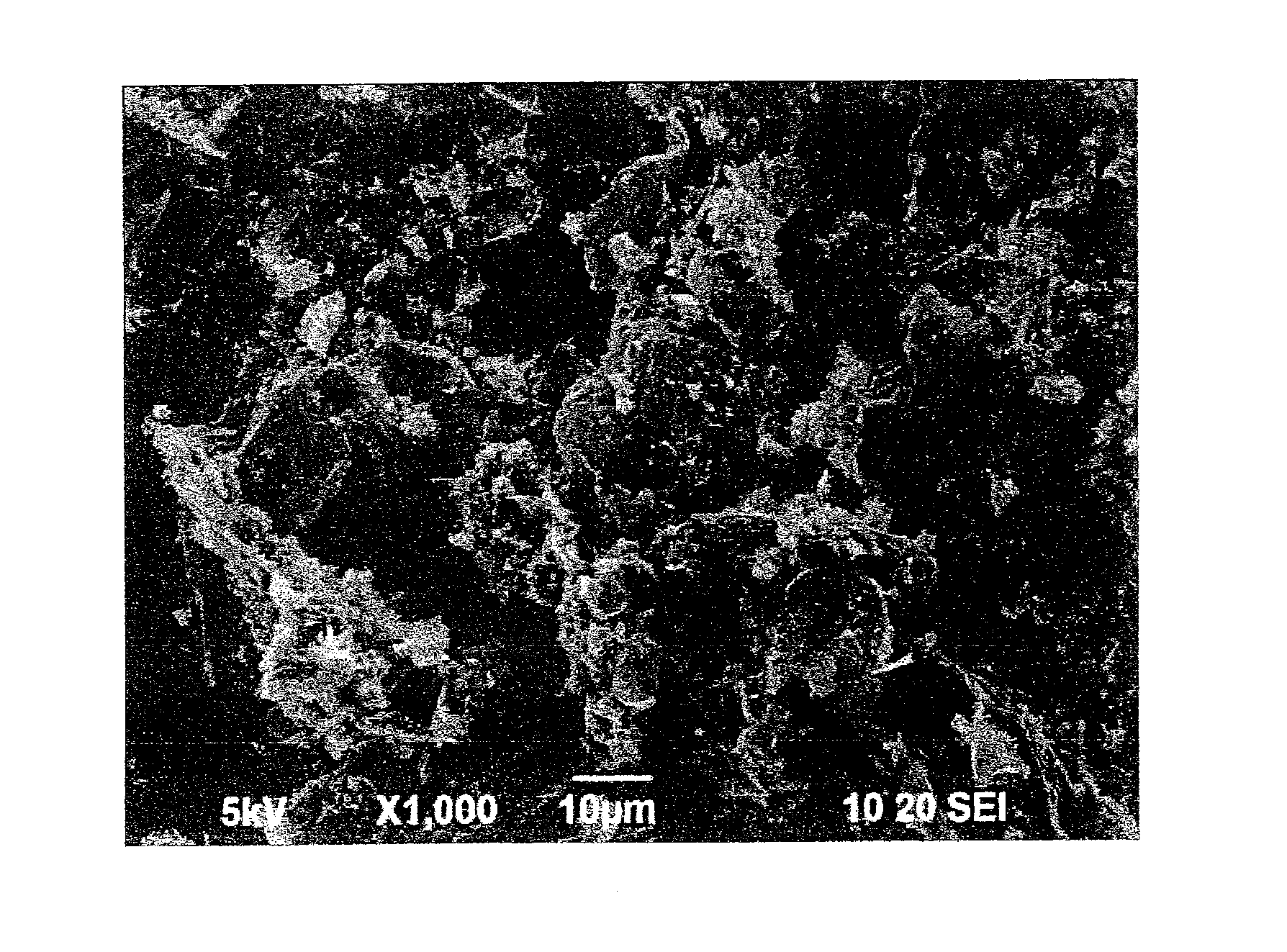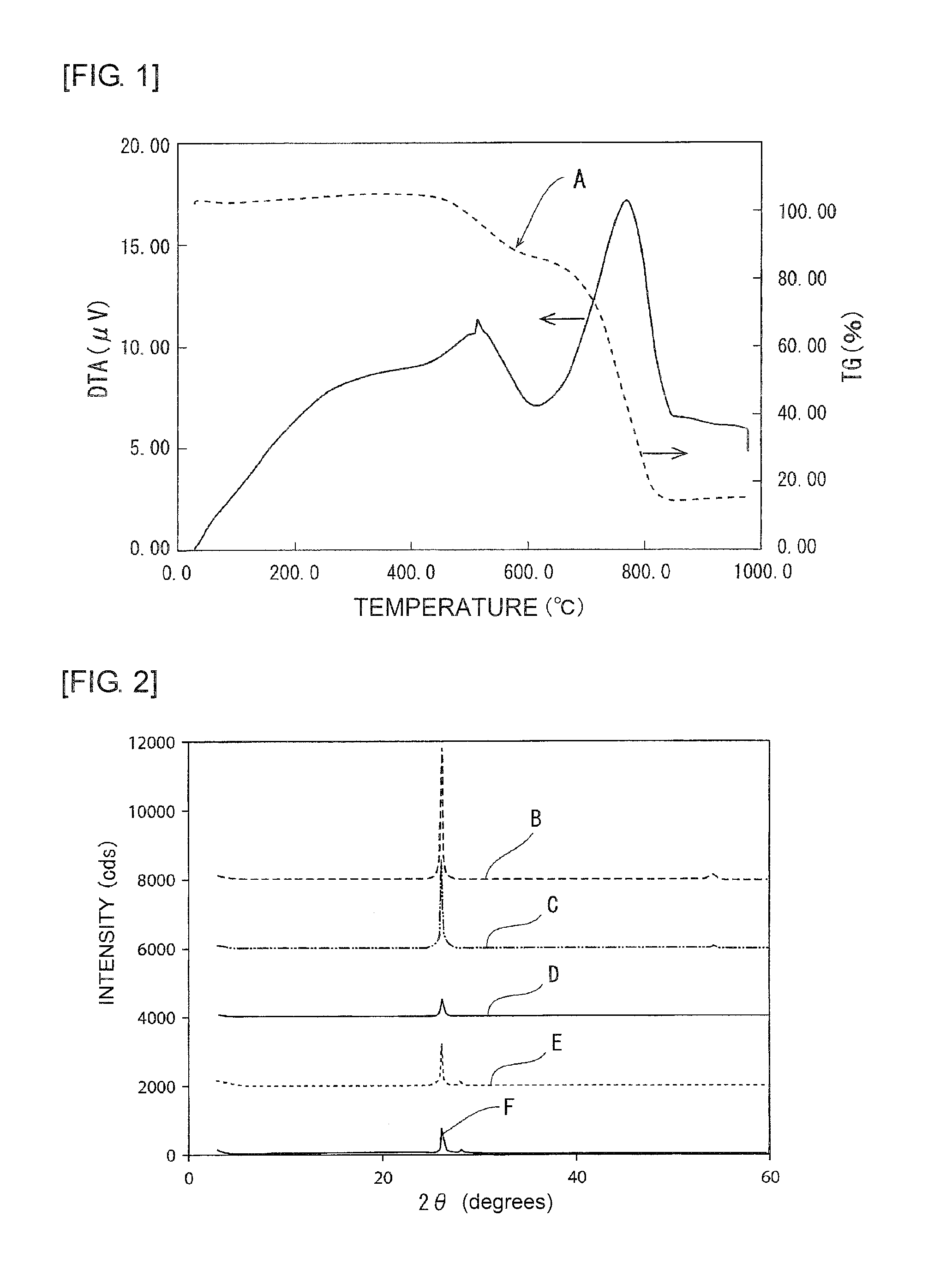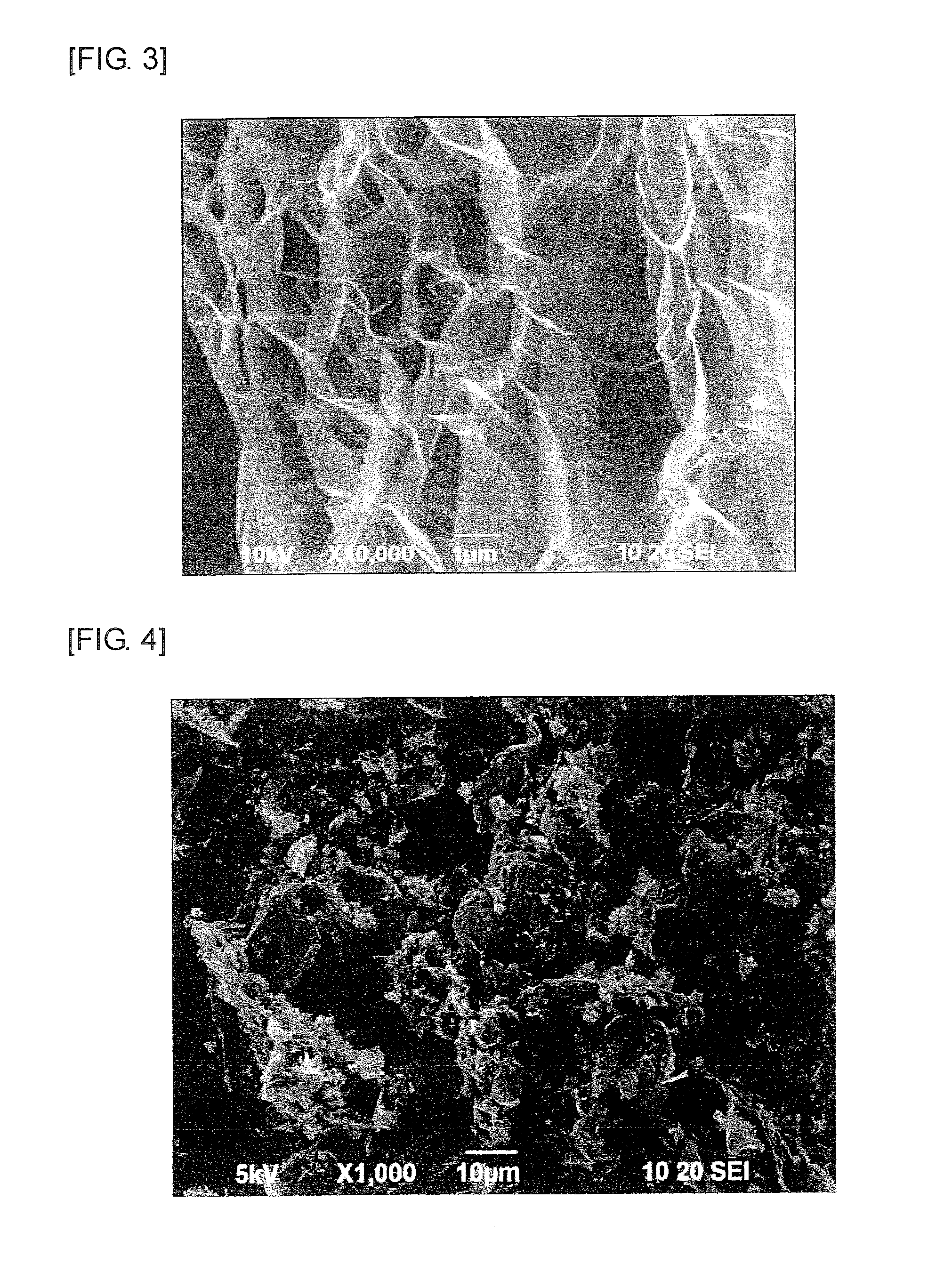Fine particle-exfoliated graphite composite, negative electrode material for lithium ion secondary battery, and methods for producing the same, and lithium ion secondary battery
- Summary
- Abstract
- Description
- Claims
- Application Information
AI Technical Summary
Benefits of technology
Problems solved by technology
Method used
Image
Examples
example 1
[0162]100 mg of the resin-retained partially exfoliated graphite obtained as described above, 10 mg of Si particles having an average particle diameter of 50 nm (NM-0020-HP manufactured by Ionic Liquids Technologies; φ 50 nm), and 20 mg of ketjen black (EC600JD manufactured by Lion Corporation) were introduced into 20 g of ethanol as a dispersion solvent and dispersed. Next, the dispersion was irradiated with ultrasonic waves at 100 W and an oscillation frequency of 28 kHz for 4 hours using an ultrasonic treatment apparatus (manufactured by Honda Electronics Co., Ltd.). The Si particles were adsorbed on the partially exfoliated graphite by this ultrasonic treatment.
[0163]Thereafter, the composition treated as described above was maintained at a drying temperature of 80° C. to remove the ethanol as a dispersion medium. Further, the composition was heated at 110° C. for 1 hour, at 150° C. for 1 hour, and at 500° C. for 2 hours. Thus, partially exfoliated graphite doped with Si particl...
example 2
[0181]Partially exfoliated graphite doped with Si particles was obtained as in Example 1 except that in the production of partially exfoliated graphite doped with Si particles, tetrahydrofuran (THF) was used as the dispersion medium instead of ethanol. Subsequently, a negative electrode material for lithium ion secondary batteries was made as in Example 1, and further, evaluation was performed as in Example 1.
[0182]FIG. 10 is a diagram showing the TG / DTA analysis results of the sheet-like negative electrode material for lithium ion secondary batteries obtained in Example 2. It is seen that also in this Example, an inflection point appears in the vicinity of 780° C. in the TG curve, and in a higher-temperature region than 780° C., the Si particles remain.
[0183]FIG. 11 is a scanning electron micrograph at 10000× magnification of the above sheet-like negative electrode material for lithium ion secondary batteries obtained in this Example.
[0184]FIGS. 12 and 13 are respective diagrams sh...
example 3
[0185]Partially exfoliated graphite doped with Si particles was obtained as in Example 1 except that in obtaining partially exfoliated graphite doped with Si particles, ketjen black was not blended. A negative electrode material for lithium ion secondary batteries was obtained and evaluation was performed as in Example 1.
[0186]FIG. 14 is a scanning electron micrograph at 20000× magnification of the sheet-like negative electrode material for lithium ion secondary batteries obtained in this manner. FIG. 15 is a diagram showing the TG / DTA analysis results of the sheet-like negative electrode material for lithium ion secondary batteries.
[0187]As is clear from FIG. 14, it is seen that also in this Example, the space between the graphenes is doped with the Si particles. As is clear from FIG. 15, it is seen that also in this Example, an inflection point appears in the vicinity of 780° C. in the TG curve. It is seen that in the region of temperatures higher than this 780° C., the Si particl...
PUM
 Login to View More
Login to View More Abstract
Description
Claims
Application Information
 Login to View More
Login to View More - R&D
- Intellectual Property
- Life Sciences
- Materials
- Tech Scout
- Unparalleled Data Quality
- Higher Quality Content
- 60% Fewer Hallucinations
Browse by: Latest US Patents, China's latest patents, Technical Efficacy Thesaurus, Application Domain, Technology Topic, Popular Technical Reports.
© 2025 PatSnap. All rights reserved.Legal|Privacy policy|Modern Slavery Act Transparency Statement|Sitemap|About US| Contact US: help@patsnap.com



